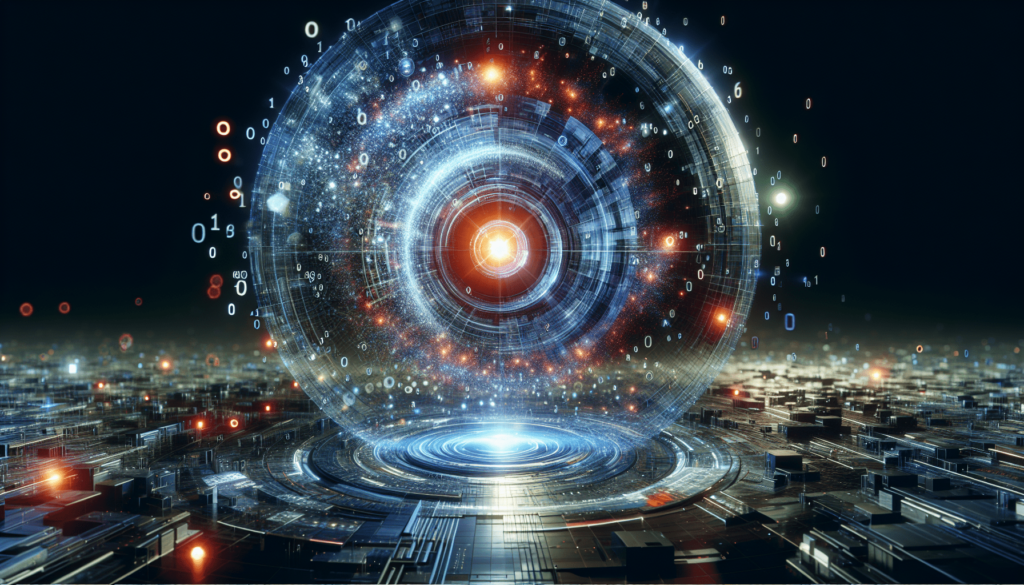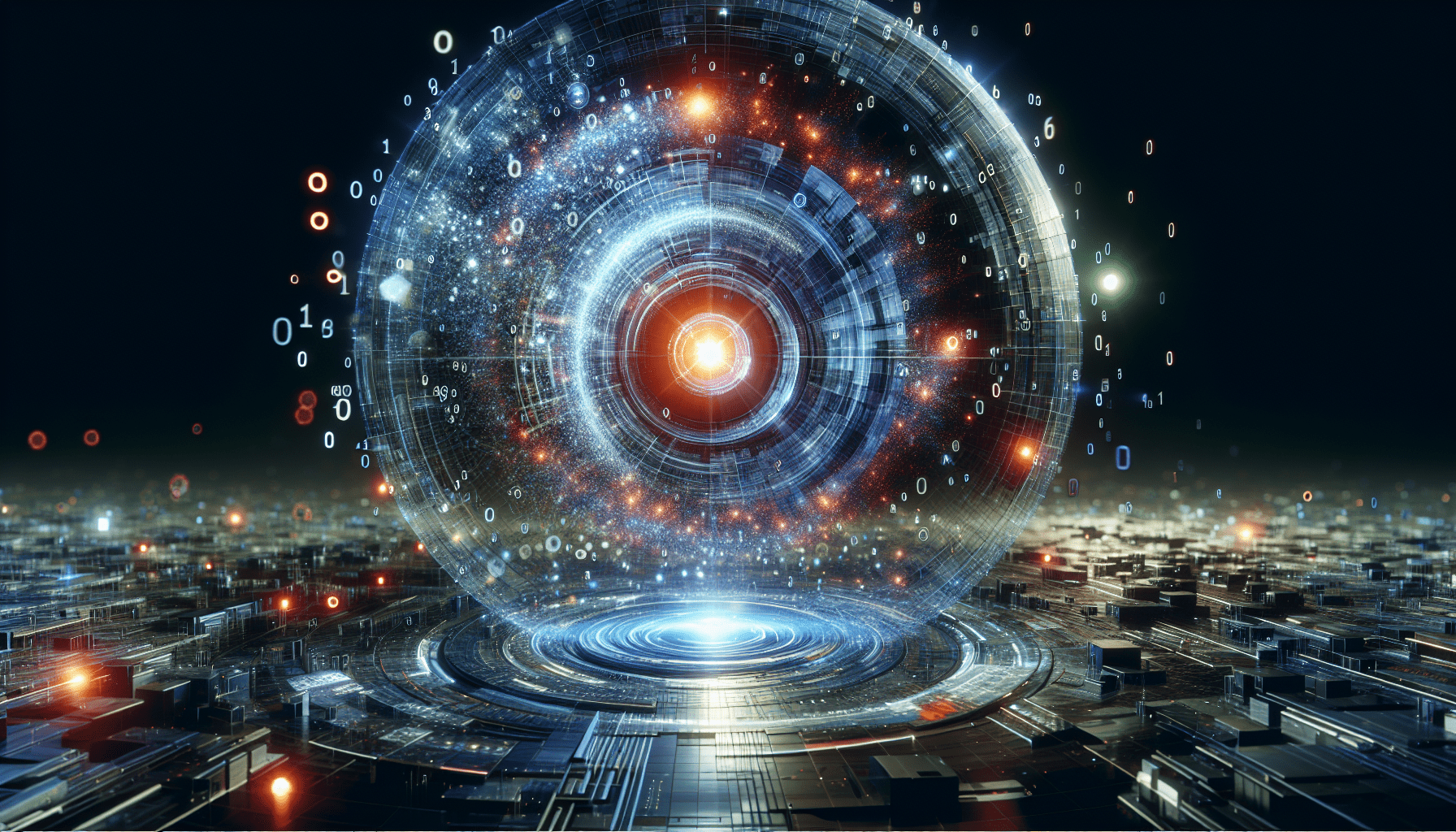Have you ever wondered how AI seems to know everything? From recommending your favorite movies to predicting weather patterns, artificial intelligence has become a fascinating enigma. But have you ever stopped to ponder how AI acquires this vast knowledge? In this article, we’ll explore the fascinating realm of AI and delve into the mechanisms that allow it to possess an uncanny ability to know so much. Get ready to unravel the mysteries behind AI’s seemingly limitless knowledge.

Types of AI
Narrow AI
Narrow AI, also known as weak AI, refers to AI systems that are designed to perform specific tasks or have specific capabilities. These AI systems are focused on a narrow area and excel at performing one specific task. They are designed to mimic human intelligence in a limited way, allowing them to perform tasks such as speech recognition, image recognition, or data analysis. Examples of narrow AI include virtual assistants like Siri or Alexa, which can understand and respond to voice commands, as well as recommendation systems used by platforms like Netflix or Amazon to provide personalized recommendations.
General AI
General AI, also referred to as strong AI or human-level AI, is a type of AI that can perform any intellectual task that a human being can do. Unlike narrow AI, which focuses on specific tasks, general AI has the ability to understand, learn, and apply knowledge across various fields. This type of AI possesses a high level of versatility and adaptability, able to adapt well to new situations, reason, and even show creativity. However, the development of general AI is still a work in progress, and scientists and researchers continue to strive towards achieving a true general AI system.
Superintelligent AI
Superintelligent AI refers to AI systems that surpass human intelligence in almost every aspect. These AI systems have the ability to think and reason at a level that is far beyond human capability, potentially even surpassing the combined intellectual capacity of all human beings. Superintelligent AI is still largely hypothetical and exists mostly in the realm of science fiction. Achieving superintelligent AI is a topic that sparks both excitement and concern, as its implications and potential impact on society are still uncertain and require careful consideration.
Training AI
Data collection
Training AI models requires a significant amount of data to facilitate learning and pattern recognition. Data collection involves gathering relevant information from various sources, such as databases, sensors, or even external APIs. The quality and quantity of data collected play a crucial role in the accuracy and effectiveness of the trained AI model. Data collection can be a time-consuming process, as it requires careful consideration of the specific requirements and objectives of the AI system being trained.
Preprocessing
Once the data is collected, it often needs to be preprocessed to ensure its accuracy and suitability for training the AI model. Preprocessing includes tasks such as removing duplicate or irrelevant data, handling missing values, and standardizing data formats. This step is essential to ensure that the training data is clean, consistent, and can be effectively utilized by the AI model.
Model building
After the data has been collected and preprocessed, the next step is to build the AI model. Model building involves selecting an appropriate algorithm or architecture that will be used to train the AI model. Different AI tasks require different models, and choosing the right model is critical to achieving accurate results. Model building also involves determining the specific parameters and settings that will be used for training the AI model.
Training
Training is the process of feeding the prepared data into the AI model and allowing it to learn from the data. During the training process, the AI model adjusts its internal parameters and weights based on the patterns and relationships it discovers in the training data. This iterative process continues until the AI model reaches a level of accuracy and performance that is deemed satisfactory. Training AI models can be computationally intensive and may require specialized hardware or distributed computing systems to accelerate the learning process.
Machine Learning
Supervised learning
Supervised learning is a type of machine learning where the AI model is trained using labeled data. Labeled data consists of input examples paired with their correct output or target values. The AI model learns from this labeled data by mapping input features to the corresponding output values. Supervised learning is commonly used in tasks such as classification, regression, and prediction. For example, a supervised learning model trained on a dataset of labeled images could learn to categorize new images into predefined classes.
Unsupervised learning
Unsupervised learning is a type of machine learning where the AI model learns from unlabeled data. Unlike supervised learning, unsupervised learning does not have predefined target values or labels. Instead, the AI model identifies patterns, relationships, and structures within the data without any prior knowledge. Unsupervised learning is often used for tasks such as clustering, anomaly detection, and dimensionality reduction. For example, an unsupervised learning model could analyze a dataset of customer purchase behavior to identify distinct groups of customers with similar preferences.
Reinforcement learning
Reinforcement learning is a type of machine learning where the AI model learns to make decisions or take actions based on feedback received from its environment. The AI model interacts with the environment and learns through a trial-and-error process, receiving rewards or punishments depending on the outcomes of its actions. Through reinforcement learning, the AI model gradually improves its decision-making abilities and learns to maximize rewards or minimize penalties. Reinforcement learning is often used in tasks such as game-playing, robotics, and autonomous vehicle control.
Knowledge Representation
Symbolic AI
Symbolic AI, also known as classical AI or rule-based AI, represents knowledge in the form of symbolic rules and logical statements. In symbolic AI, the AI system uses domain-specific rules and logic to perform reasoning and decision-making. Symbolic AI systems excel at tasks that require explicit knowledge representation and logical reasoning. They are often used in applications such as expert systems, theorem proving, and natural language understanding.
Connectionist AI
Connectionist AI, also known as neural network AI or subsymbolic AI, represents knowledge in the form of interconnected nodes or artificial neurons. Connectionist AI models are inspired by the structure and function of the human brain, using interconnected networks of artificial neurons to process and represent information. Connectionist AI excels at tasks that involve pattern recognition, learning from examples, and handling large amounts of data. Examples of connectionist AI include deep learning models used in image recognition, natural language processing, and speech synthesis.
Probabilistic AI
Probabilistic AI represents knowledge using probability theory, allowing the AI system to reason and make decisions under uncertainty. Probabilistic AI models capture and analyze the uncertainties and dependencies within the data, enabling them to make probabilistic inferences and predictions. Probabilistic AI is used in tasks such as probabilistic modeling, Bayesian reasoning, and decision making under uncertainty. It is particularly useful in applications such as medical diagnosis, risk assessment, and financial forecasting.

Data Processing
Data acquisition
Data acquisition involves gathering raw data from various sources, such as sensors, databases, or external APIs. The acquisition process must ensure that the data collected is accurate, reliable, and complete. Depending on the application, data acquisition can involve real-time streaming data or batch data processing. Data acquisition is a critical step in the data processing pipeline, as the quality and availability of data directly impact the accuracy and effectiveness of AI models.
Data cleaning
Data cleaning, also known as data cleansing or data scrubbing, involves the identification and correction of errors, inconsistencies, or inaccuracies within the collected data. This process aims to improve the data quality by removing duplicates, handling missing values, and resolving inconsistencies. Data cleaning is important for ensuring that the AI models are trained on reliable and trustworthy data, as inaccurate or incomplete data can lead to biased or incorrect results.
Data integration
Data integration involves combining data from different sources or formats to create a unified view of the data. This process ensures that the data can be effectively utilized and processed by AI models. Data integration often involves data transformation, normalization, or aggregation to facilitate meaningful insights and analysis. The integration of data from diverse sources enables AI models to learn from a broader range of information and make more accurate predictions or decisions.
Data analysis
Data analysis involves applying statistical and machine learning techniques to extract valuable insights and information from the collected data. This process helps uncover patterns, trends, and relationships within the data, providing actionable insights for decision-making. Data analysis techniques can range from simple descriptive analysis to complex predictive modeling and clustering algorithms. By analyzing the data, AI models can gain a deeper understanding of the underlying patterns and make more informed predictions or recommendations.
Natural Language Processing
Speech recognition
Speech recognition, also known as automatic speech recognition (ASR), involves converting spoken language into written text. This technology enables AI systems to understand and interpret human speech, allowing for hands-free interaction with devices and applications. Speech recognition is used in various applications, including voice assistants, transcription services, and call center automation. AI models trained on large datasets of spoken language learn to recognize and transcribe speech accurately, even in noisy or challenging environments.
Machine translation
Machine translation involves automatically translating text or speech from one language to another using AI techniques. Machine translation enables communication and understanding between people who speak different languages, breaking down language barriers. AI models trained on multilingual datasets learn to translate text or speech by recognizing patterns and linguistic structures specific to different languages. Machine translation is widely used in applications such as online language translation services, multilingual customer support, and cultural exchange platforms.
Text analysis
Text analysis, also known as natural language processing (NLP), involves the computational understanding and analysis of human language. This involves tasks such as sentiment analysis, named entity recognition, topic modeling, and text classification. AI models trained on large text corpora learn to analyze and interpret text, enabling applications to extract meaning, sentiment, or insights from textual data. Text analysis is used in a wide range of applications, including social media monitoring, customer feedback analysis, and document summarization.
Computer Vision
Image recognition
Image recognition involves the automatic identification and classification of objects or patterns within images or videos. AI models trained on vast datasets of labeled images learn to recognize objects, detect specific features, and classify images into predefined categories. Image recognition has various applications, including facial recognition, object detection in self-driving cars, and quality control in manufacturing processes. This technology enables AI systems to perceive and interpret visual information, opening up new possibilities for automation and understanding of the visual world.
Object detection
Object detection is a subfield of computer vision that focuses on identifying and localizing specific objects within images or videos. Object detection algorithms scan an image or video frame and identify regions that contain objects of interest. This allows AI systems to not only recognize objects but also determine their locations and boundaries within the image or video. Object detection is used in applications such as surveillance systems, autonomous vehicles, and augmented reality. By detecting and tracking objects in real-time, AI systems can make informed decisions and take appropriate actions.
Video analysis
Video analysis involves the automated analysis and understanding of the content within videos. AI models trained on video data learn to extract meaningful information, such as object movements, scene transitions, or activity recognition. Video analysis has numerous applications, including video surveillance, video content summarization, and video recommendation systems. By analyzing videos, AI systems can gain a deeper understanding of visual content and provide valuable insights for various domains, such as security, entertainment, and marketing.
Information Retrieval
Search engines
Search engines are AI-powered systems that allow users to search for relevant information across the vast expanse of the internet. Search engines use AI algorithms to crawl and index web pages, analyze user queries, and provide relevant search results. This involves techniques such as keyword extraction, ranking algorithms, and natural language processing. Search engines play a crucial role in enabling users to find information quickly and easily, making them an integral part of our daily lives.
Text mining
Text mining involves the extraction of valuable information or knowledge from large collections of text documents. AI models trained on vast text corpora learn to analyze and extract patterns, relationships, or trends within the text data. Text mining techniques include tasks such as sentiment analysis, topic modeling, and information extraction. Text mining has applications in various domains, including market research, social media analysis, and fraud detection. By mining text data, AI systems can uncover insights that would be difficult or time-consuming for humans to discover.
Recommendation systems
Recommendation systems are AI-powered systems that suggest relevant items or content based on user preferences or behavior. AI models trained on user data and item features learn to predict user preferences and make personalized recommendations. Recommendation systems are widely used in e-commerce, streaming platforms, and social media. By recommending relevant items, products, or content, AI systems enhance user experience and engagement, driving customer satisfaction and increasing business revenue.
Big Data
Data storage
Data storage involves the physical or virtual storage of large volumes of data. Big data storage solutions are designed to handle the vast amounts of data generated by AI systems, providing fast and reliable access to the data. This includes technologies such as distributed databases, data warehouses, and cloud storage. Effective data storage is crucial for AI systems, as it allows for efficient data retrieval, processing, and analysis, enabling organizations to leverage the power of big data.
Data management
Data management involves the organization, structuring, and manipulation of data to ensure its reliability, integrity, and consistency. Data management includes tasks such as data cleaning, data integration, and data governance. Effective data management is essential for AI systems, as it ensures that the data used for training and analysis is accurate, complete, and properly maintained. By managing data effectively, organizations can derive meaningful insights and make data-driven decisions.
Data analysis
Data analysis in the context of big data involves the application of advanced analytics techniques to extract valuable insights and knowledge from large and complex datasets. Big data analysis includes techniques such as machine learning, data mining, and predictive modeling. By analyzing big data, AI systems can identify patterns, trends, or correlations that may not be apparent in smaller datasets. Big data analysis has numerous applications, including fraud detection, customer segmentation, and predictive maintenance.
AI and Human Interaction
Chatbots
Chatbots are AI-powered systems that simulate human conversation through voice or text interactions. Chatbots use natural language processing and machine learning techniques to understand user queries and provide relevant responses. Chatbots have applications in customer support, virtual assistants, and information retrieval. By interacting with chatbots, users can access information quickly, perform tasks, or seek assistance, enhancing user experience and convenience.
Virtual assistants
Virtual assistants, such as Siri, Alexa, or Google Assistant, are AI-powered systems that can perform various tasks and answer user queries through voice interactions. Virtual assistants combine natural language processing, machine learning, and knowledge representation techniques to understand and respond to user commands or queries. Virtual assistants can perform tasks such as setting reminders, playing music, or providing information on a wide range of topics. By leveraging AI technology, virtual assistants provide users with a personalized and interactive experience.
Sentiment analysis
Sentiment analysis, also known as opinion mining, involves the use of AI techniques to extract and analyze subjective information from textual data. Sentiment analysis aims to understand and categorize people’s opinions, attitudes, or emotions towards a particular topic or entity. This technology is commonly used in social media monitoring, customer feedback analysis, and brand reputation management. By analyzing sentiment, AI systems can gain insights into public opinion, enabling organizations to make informed decisions and adapt their strategies accordingly.
In conclusion, AI encompasses various types and applications that contribute to its ability to “know everything.” From narrow AI to general AI and superintelligent AI, the field of AI continues to evolve and push the boundaries of human knowledge and capabilities. Through training AI models, utilizing machine learning techniques, representing knowledge in different ways, processing data effectively, and leveraging natural language processing, computer vision, and information retrieval, AI systems can increasingly understand, interpret, and interact with the world around us. As AI and human interactions continue to evolve, chatbots, virtual assistants, and sentiment analysis are just a few examples of how AI seamlessly integrates into our daily lives, making tasks easier, improving decision-making processes, and enhancing overall user experience. With advancements in big data and the continuous development of AI technologies, the potential for AI to know even more and contribute to various fields and industries is vast, promising a future filled with remarkable possibilities.
